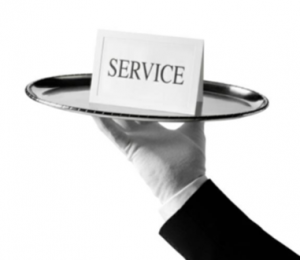A lesson in customer management from luxury hospitality
 No is essential in business. Without it, there’s no focus: every idea is a good idea and any deal is a good deal. Despite having limited resources, some companies try to be all things to all people, continually chasing squirrels. Conversely, well-run organizations say no to the many unimportant things so they can say yes to the few important things.
No is essential in business. Without it, there’s no focus: every idea is a good idea and any deal is a good deal. Despite having limited resources, some companies try to be all things to all people, continually chasing squirrels. Conversely, well-run organizations say no to the many unimportant things so they can say yes to the few important things.
But when it comes to working with customers, no disappoints. It provides an answer but eliminates options. It kills conversations and terminates possibilities. Saying yes to every customer request isn’t practical, profitable, or wise. So how can you say no without actually saying “no?”
Take a hint from luxury hospitality. Customer experience isn’t a thing in luxury hospitality, it’s everything. These companies define a superior customer experience as making things positive, pleasant and effortless, no matter the circumstances. Abruptly saying “no” is simply not done. Many leading high-end hoteliers, in fact, strike the word from their vocabularies.
Rather than answering “no,” front line employees give a qualified yes. They state the conditions under which a positive response is possible and they immediately prompt customers for a choice:
 “Of course we can seat you at the window. I expect it will be about fifteen minutes. Otherwise there’s immediate seating at that cozy booth by the bar. Would you prefer that instead?”
“Of course we can seat you at the window. I expect it will be about fifteen minutes. Otherwise there’s immediate seating at that cozy booth by the bar. Would you prefer that instead?”
“Hmmm. It appears the Los Cabos villa is booked that week. We can waitlist, but if a beach vacation is what you’re after, how about Turks and Caicos? It’s always in high demand but it appears we have availability on your requested dates.”
“Yes, I’d be happy to stop by at 4pm to pick up your trousers. You know, the dry cleaner is located just a block from where your party is having lunch, so if you’d rather stop in on your way back you can have them sooner.”
Instead of stewing in frustration after hearing “I’m sorry, I can’t do that,” the customer is immediately redirected to a decision. On a subconscious level, the choice gives customers a moment of power instead of a moment of disappointment. Their perception of accommodating service is restored, and customers may not even notice that their original request could not be fulfilled.
Technology companies can learn from this example. Too often, customer-facing employees think all that’s required is the right answer, overlooking the importance of how that response will be received. A qualified yes, instead of a flat no, creates a much better experience:
 “I’m happy to do that for you. That’s covered under our Premium support plan. Can I get a credit card to upgrade your account so we can get started?”
“I’m happy to do that for you. That’s covered under our Premium support plan. Can I get a credit card to upgrade your account so we can get started?”
“Yes, we do offer discounts—when our customers purchase in volume. I can give you 10% off if you buy 25 licenses instead of the ten we discussed. Perhaps there are others at your company who can benefit from the software as much as you do. How does that sound?”
“That was a great feature suggestion. I spoke to our product manager and she put it in the roadmap for 2016. If you need it sooner, I can connect you with one of our third party integrators who could do some custom code development in the meantime.”
Using a qualified yes is a simple change that makes a big difference. Even though your counter-proposals may not result in action, customers will feel their needs were heard, considered, and cared about, not dismissed out of hand. Being solution-centric instead of answer-centric leaves the impression that you helped, not hindered their progress. Crafting a qualified yes takes practice, but it’s a powerful tool for building strong, trusting relationships.
Did you enjoy this article? Subscribe to Excel-lens now and never miss another post.
